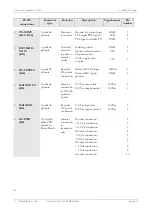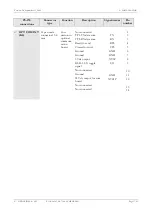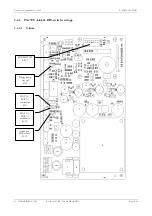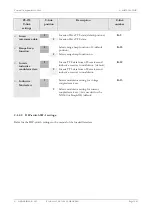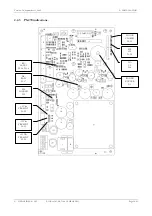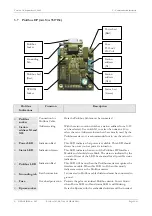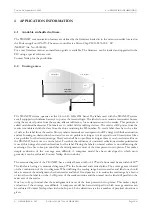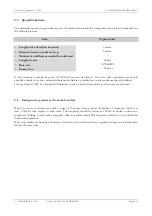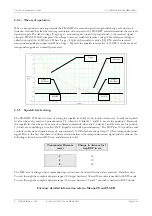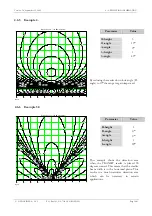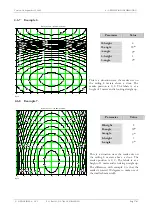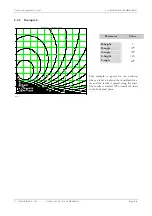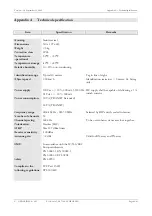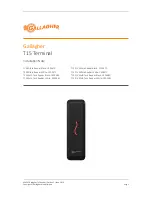
Version: 1.0, September 19, 2002
3 – Communication interfaces.
3 Communication
interfaces.
3.1 Connections to inductive readers.
The TRANSIT features two ways to connect it to external inductive NEDAP readers.
•
Bringing the 120 kHz antenna signal of the external inductive reader to the TRANSIT and connecting it to
120 kHz-MOD connector of the Power supply unit (K1-1 and K1-2). The TRANSIT will modulate the
received tag data on the 120 kHz antenna signal of the external inductive reader. The TRANSIT looks for
the external inductive reader as an antenna. This feature makes the application of the TRANSIT simple in
existing installations. To optimize the quality of the modulating signal the modulation depth can be selected
in accordance with the type of receiver used in the external inductive reader. The U-Link setting: “ Inductive
Mod select, K-13”, on the Power supply unit allows for the selection between voltage- or current coupled
receivers. Contact NEDAP when in doubt which kind of external inductive receiver you want to connect to
the TRANSIT system.
•
Remember that when using the modulation function of the TRANSIT on the 120 kHz antenna signal of an
external inductive reader, to select external antenna (tuning) on this inductive reader. For the Accessor III-A
and Accessor III-B for example this shall be realized by setting J1 in the external position.
3.2 Connections via the special code emulation outputs.
•
The outputs OUT-1, OUT-2 and OUT-3 used for the emulated output for Wiegand 26, Omron, Barcode
and others are vulnerable for large potential differences. Care shall be taken to connect always the ground of
the receiving system to the TransIT and use shielded cable.
3.3 Removing the optional communication boards.
•
Remove the optional communication boards only when the TransIT is disconnected from the mains supply,
not doing this will damage the communication board.
© NEDAP IDEAS – AVI
P.O. Box 103, NL-7140 AC GROENLO
Page 25-41






